The raw outcome of beauty standards

November 8, 2018
You are at the supermarket, waiting in a long line of endless carts full of food, and all you want to do is leave. To pass the time, you pull out your phone and scroll through Instagram, taking in the vacation photos, movie clips, models and celebrities, and more. You notice the amount of comments that a girl received on a post, and you compare it to the amount you have. Her 74 comments make your 13 look tiny and unimportant, but you push that feeling down and keep scrolling, then feel a swell of confidence as you see a girl with only 4 comments, which looks small in comparison to your 13. This cycle keeps going, and sooner or later you’ll just go drown in YouTube and snacks, because you don’t want to deal with this jealous cycle anymore.
Your social media is bound to have photos that lower your self-esteem. It can occur with anything, whether it’s a magazine, a different social media platform, or any other place where photos could be displayed.
Celebrities post photos of them on magazine covers, looking made up and beautiful, with thigh gaps and skinny waists. Girls your age might post bikini photos, or photos of them with makeup on, or anything that makes them look a little better than how you normally look. Teenagers always go through the period of not feeling comfortable with the way they look, but with social media, it’s amplified. Now, wherever you go, you are bound to see something that might make you self-conscious.
Self-esteem is valued. Taking a photo and thinking, “Hey, I look cute,” is a rarity, especially in today’s culture. Social media is a valued part of life in 2018, and like all things, it has pros and cons. You can keep up with old friends, get updates on various books and TV shows you like, and more. However, you also follow celebrities and models, who look great in all the photos they post, and even when they aren’t made up, they still look good.
There are many factors contributing to a poor body image in teenagers. Some forms of media have portrayed beauty as an impossible standard and has caused many people to have low self-esteem, and that can lead to eating disorders or another form of self harm.
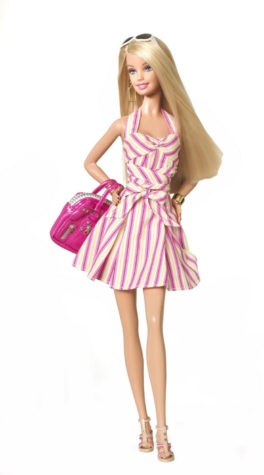
Most models of Barbie have the exact same body. They all have the “Barbie look.” A look desired by all, but only a select few go the extra mile for their desired body.. But we’ll get to that later. For now, picture Barbie. As a little kid, Barbie was amazing, and everything kids wanted to be when they grew up. But now, looking back, as much fun as she was to play with, she really diminished my self esteem. Barbie’s proportions are dangerously unhealthy, and as desired as they are, it would be impossible for them to live their lives.
If Barbie was a real person, she would be incredibly unhealthy. Based off of her body as a doll, she would barely be able to lift her head, she’d have to walk on all fours, she would only have enough room for a few inches of intestine and half a liver. Imagine living like that.
As desired as Barbie’s look is, if you wanted to look like her, you would have to make a ton of sacrifices to look like her. There are a ton of “Human Barbies” in the world today, but no one is as close to the doll as Valeria Lukyanova, a model from Ukraine.

Lukyanova, a 33 year old model, has lead an interesting life. She grew up in Moldova, she played with dolls, however,when she played with dolls, she didn’t play with them the way most did. Instead of having a wedding between Barbie and Ken, or playing house, she noticed the symmetry of their faces, something that most kids don’t notice.
Most kids move on from playing with Barbie around 12 or 13, and move on to other activities. Lukyanova didn’t. The obsession with Barbie’s symmetry never left her brain, even if playing with dolls did.
As a teenager, Lukyanova went into a “goth phase,” and there are many photos circulating the internet of her practicing witchcraft. She has always believed she was from another planet and has expressed this in the past. She calls herself Amatue, a name she claims came to her in a dream.
Her beauty is very strange, but it is exactly what you would think Barbie would look like if she were alive. Michael Idov, a writer for GQ, said in his article on Lukyanova, “A living Barbie is automatically an Uncanny Valley Girl. Her beauty, though I hesitate to use the term, is pitched at the exact precipice where the male gaze curdles in on itself. Her features are the features we men playfully ascribe to ideal women; it’s how we draw them in manga and comics and video games.”
As much as people desire this look, only a few have it. Men fantasize about women with big eyes, tiny waists, big breasts, and most of Lukyanova’s other features, and as Idov says, it can be very unnerving, as it isn’t beautiful as you might think.
Lukyanova isn’t the only “Human Barbie” out there, though. Blondie Bennett, a 38 year old woman obsessed with being just like Barbie, has interesting ideals when it comes to her looks. She believes that, to be the ultimate human Barbie, she needs to be stupid. An airhead, if you will. In an interview with the Huffington Post, Bennett stated, “I just want to be the ultimate Barbie. I actually want to be brainless,” Blondie Bennett, 38, told Barcroft TV. “I don’t like being human, if that makes sense… Natural is boring… I would love to be like, completely plastic.’ Bennett has had five breast augmentations and other procedures in the hopes of attaining her goal. But now she says she’s undergoing hypnotherapy sessions two-to-three times a week in order to dumb down her thoughts.”
What is odd about Bennett’s ideals is that Barbie was never meant to be an idiot. Barbie had a ton of jobs, though the jury is still out as to if she did them well, but it was heavily implied that she did. So why did Bennett so desperately want to be dumb, if it wasn’t really part of Barbie’s image?
Maybe it’s because that is a stereotype that some men want and fantasize about. Like Lukyanova’s features, it could be unnerving when the blonde airhead people might want as just eye candy comes to life. In that past, women were expected to “sit still, look pretty.’’ Now, it’s just a fantasy, and it’s one that Bennett wanted to fill.
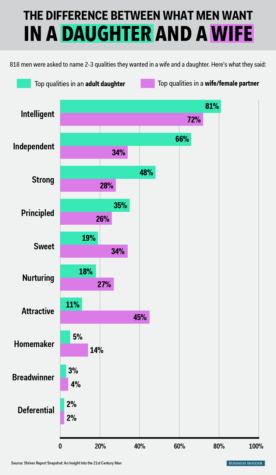
But why do women have to feel like they need to fill stereotypes? Men don’t have to fill stereotypes women want and fantasize about, so why is it the opposite for women? Not that all women do, but the need for women to fill fantasies is odd. There are plenty of other ways for someone to be appealing to someone else. You shouldn’t have to be what they want, and they shouldn’t have to be what you want.
Then, there is pressure from parents. Sometimes parents control their children’s lives to the point where the child has little to no freedom.
Angelica Kenova, a 26 year old from Moscow, is another person to add to the growing list of plastic people. In an article with the Huffington Post, Kenova said, “I should be independent but my parents insist I still live with them. They don’t want me to move into my own place and I am still dependent on them financially. I’m not even allowed to buy clothes without my mum there — she likes to choose attire that clings to my figure and emphasize my good features.”
Control from parents is just one of the tons of reasons for plastic surgery or exploitation. But it seems to stem from one major issue, which is societal expectations. People want women to be blonde, skinny, and dumb. But since it’s so rare, at this point it is more a fantasy than anything else. Yet, we have women, and some men, who feel they need to change their looks to be more appealing. In the cases of Lukyanova and Kenova, there is a different logic going on behind it, but a very large, overarching reason people don’t feel comfortable in their bodies is because it isn’t what they feel everybody else wants.
Teenagers feel the heat of this the most. In an article from The Odyssey, author Libby Jourdan wrote, “It’s OK if you don’t know how to contour. It’s OK if you can’t afford PINK yoga pants or can’t fit into Brandy Melville jeans. It’s OK if you’d rather spend your hard-earned allowance money on McDonald’s and movies instead of MAC. It’s OK if your selfies on Instagram don’t get hundreds of likes, and it’s OK if you want to be a kid for a little while longer. Your teenage years are so short, yet they have the potential to be some of the most exciting years of your life; don’t feel pressured to rush through them and into adulthood.”
Being a teenager is a great time in your life, and some people feel like they have to speed them along. There will always be PINK and Brandy Melville and all the brands you wish you could afford, but you won’t be in high school forever. People should enjoy their time instead of wishing it could speed up.
Maybe a reason for teens wanting time to move a bit quicker is because of what is displayed to them on social media. While scrolling through Instagram or flipping through a magazine, you’re bound to see an image of a celebrity or model looking like exactly like what people wish they looked like. But it isn’t always natural.

Photoshop has become a massive part of beauty culture, and it’s accepted that we don’t need to see celebrities in their natural beauty. But actors, actresses, and models are just as much human as we are, and not all of them want to be photoshopped. Zendaya posted a photoshopped photo of herself and captioned it, “Hada new shoot come out today and was shocked when I found my 19 year old hips and torso quite manipulated. These are the things that make women self conscious, that create the unrealistic ideals of beauty that we have. Anyone who knows who I am knows I stand for honest and pure self love. So I took it upon myself to release the real pic (right side) and I love it?? Thank you @modelistemagazine for pulling down the images and fixing this retouch issue.”
Women often feel like they need to change their bodies, via a computer in this case, to improve their self-esteem. When teens have a role model that speaks out against body shaming, it promotes body positivity, which is something we like to see from someone we look up to.
Another problem with magazines is that, though they might promote body positivity, they don’t always make it the first thing you see. When Troian Bellisario, an actress from the popular show Pretty Little Liars, opened up about her eating disorder, it was not the first thing displayed on the magazine cover. “[Troian Bellisario] Who opened up about her past problems with an eating disorder. The teen magazine decided to feature that as a teaser on the cover, right above a much larger headline for “Get an Insane Body — It’s hard, but you’ll look hot!” This juxtaposition of providing an outlet for a young actress to open up to young fans about a disorder that “ripped her life apart” next to a story promoting the thin ideals that drive many girls and women to such extremes in eating is appallingly irresponsible.”
Awareness isn’t always spread about issues like eating disorders, especially when a public figure comes out about an experience with it. People want to put them in a box, and they can’t act like human beings. So when a figure like Bellisario speaks about this issue, it isn’t going to be number one. Also, people reading magazines don’t always want to read about something real that had a strong effect on someone, they want to read articles to help boost their self esteem.
Photoshop has a bad effect on people in general. It makes people, especially young girls, believe in impossible standards and looks. In a CNN article by Jo Swinson, she wrote, “From smoothing skin and erasing wrinkles to enlarging muscles and slimming waists, airbrushing, or “photoshopping,” men and women to so-called perfection is the norm in advertising. These images don’t reflect reality, yet from a younger and younger age, people are aspiring to these biologically impossible ideals.”
Perfection isn’t a norm. Perfection isn’t really a possibility, because everyone has their own “perfection.” And yet we allow computers to dictate our lives and ideals. Slimmer waists and thighs don’t determine beauty. Tanner skin doesn’t determine beauty. Thicker hair doesn’t determine beauty. But when we see celebrities with these desirable qualities, we feel like we need them. But as cliche as it sounds, everyone has their own beauty, and everyone is beautiful.
There are many types of beauty, and big companies have started using models that have an unconventional beauty instead of a stereotyped beauty.
One of these new up and coming models is Sara Geurts, a 26 year old with a rare skin condition was written about in Glamour Magazine, and the author wrote, “For all the fuss we make about taking care of our skin—and all the money we drop on cleansers, moisturizers, serums, and creams—we all have a pretty good idea of what the outcome will be. Aging is inevitable and nothing to be ashamed of, and having “perfect” skin isn’t what makes you beautiful. Sara Geurts, a 26-year-old model, knows that. She’s shattering the idea that you need to have smooth, taut skin to look and feel gorgeous.”
Skin is such a big part of beauty culture, and Geurts is showing that you don’t need perfect skin to be beautiful. Skin isn’t meant to be as smooth and taut as it is shown, and nobody has it exactly. Skin won’t be perfect forever, and piling on product after product only closes and blocks pores, and that will just make your skin less perfect faster. Stress can also add to acne, so the more you stress, the more you break out.
Every teenager goes through the acne phase, it’s inescapable. But skin conditions create even more shame, because it can make people feel better about their acne. When you see someone with a condition that makes their body look very different then to what you are accustomed to, people tend to freak out and react negatively, as cruel as it may be.
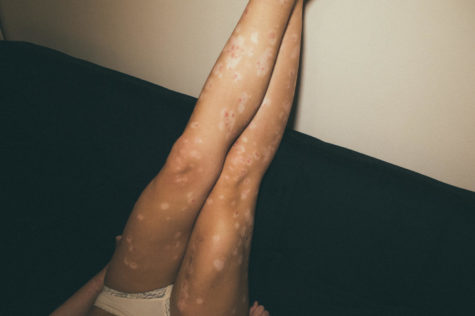 Fotini (last name not mentioned), a 29 year old woman, has a skin condition called psoriasis, which results in her having welts and blisters all over her body. They aren’t painful nor contagious, however, many people find them revolting. Fotini has been body shamed several times for her marks, but her worst experience was when someone told her she looked like a reptile. When people hear these things, they are scarred for life, not only externally, but internally. You can never erase hurtful comments, no matter how much you try.
Fotini (last name not mentioned), a 29 year old woman, has a skin condition called psoriasis, which results in her having welts and blisters all over her body. They aren’t painful nor contagious, however, many people find them revolting. Fotini has been body shamed several times for her marks, but her worst experience was when someone told her she looked like a reptile. When people hear these things, they are scarred for life, not only externally, but internally. You can never erase hurtful comments, no matter how much you try.
Fotini, along with many other people, has faced many malicious comments that have lowered their self esteem significantly. Studies show that in 2016, over 60% of people have had eating disorders based on body shaming.
It’s 2018, and although it may seem like we’ve come a long way, the reality is that people are still very much judged based on their looks, if not more, and it still has the same effect as it did 20 years ago.
Beauty pageants are a major contribution to this issue, in that they make people believe that they are not beautiful on the outside.
14 year old Jay Gottesman is a freshman at the NYC iSchool. They said, “They just set up this image for these kids. Child beauty pageants are the worst kind, because the kids grow up to be beauty pageant teens and beauty pageant adults, and they think that the most important thing is your image.”
Jay is putting out the idea that many have heard and said before: Beauty pageants are just another way to make people feel bad about their looks.
Many parents force their children to cover their still developing faces in makeup and wear fake eyelashes as well as putting them in fancy outfits. It’s not only little kids who are participating in these pageants, children of all ages exploit their bodies in pageants.
Beauty pageants do not only judge people on their looks, but also on their talent. In a beauty pageant, you go up on stage, show off your body, and present your talent. Then, the judges choose the final contestants and crown the one who is the most pretty and who has the best talent.
The only thing that beauty pageants accomplish is making people feel bad about their looks, and making those who are perfect feel better. Everyone should be comfortable in their bodies, and nobody should be judged in beauty pageants based on their looks.

Beauty pageants exploit people’s looks to make their companies look better, and to elect the“most beautiful” person. The entire concept is insane.
Junior Abbe Shulties has an interesting opinion on the matter: “Its constant comparison and it drives the idea of women comparing themselves to other girls.” Abbe is saying that when people compete for “prettiest girl” or “Miss America” all they are doing is making each other feel bad.
Beauty pageants don’t only make people feel bad. Many people actually take action on their low self-esteem. Megan MacCutcheon says that our society is filled with messages that are telling us we have to look a certain way and have a certain body type. Beauty pageants among other factors such as perfect models are making people feel ugly in their bodies, which nobody should feel.
However, there are people who would enjoy being in a beauty pageants. Freshman Gladys Porfirio thinks that it could be a good way to get money. She says, “It depends on the purpose of the beauty pageant, if its showing off your natural curves, your natural features all that than yes (I would like to participate in one) but if it’s like anybody who has plastic surgery, maybe I would not want to participate.”
Gladys is saying that if the beauty pageant is about natural beauty, rather than plastic surgery, that she would want to participate for the money and the opportunity, whereas if its about who is the prettiest, the one with the perfect features, she would not.
When people compete in beauty pageants that are solely judge based on looks, they begin to feel bad about their appearance when they don’t win, and those who do win exploit their bodies.
Recently, the Miss USA competition no longer includes the bathing suit component, which is a major uprising the company of beauty standards
This leads me to the fact that models with perfect features create this unrealistic body standard that is impossible to meet without plastic surgery.
Many models have had so much plastic surgery that it’s almost impossible to see their original appearance. Actions like this make people feel like they need to be perfect and that they need to have perfect features in order to be beautiful.
There are many causes to wanting plastic surgery and having a low self- esteem, but one major factor is Barbie. Barbie has a perfect face and perfect features, and although the majority of people who play with Barbie are girls age 3-10, they get this idea that beautiful means having a skinny waist and defined curves. When this image gets put in little girl’s minds, even though they are probably not aware of it at that age, they get influenced to want to look like that.
Tabitha Farrar writes that only 18 percent of adolescents are really overweight.” These innocent children feel overweight because of the body standard that has been put in their minds.
There’s a big difference between feeling overweight and actually being overweight. People who are truly overweight could likely be in risk of health issues, but people who just have a little extra body fat are healthy. It’s healthy to have some extra weight, however, it is unhealthy to have either none or a lot.
16 year old junior Margareta Stern has a very interesting opinion on the matter “Yeah actually I watched a video about this really weird Russian model, she’s had a lot of different surgeries to look like barbie. When I first saw it I thought it was disgusting but then I realized it was her body.”
Valeria Lukyanova is a Ukrainian model who has made herself look like a human barbie. Margareta has the same thought as most people, in that it looked ridiculous because of all her surgeries, but then she realized that because it was her body, she could do whatever she wanted.
People need to have the right to do what they want with their bodies in order to make them feel good, and if that includes having excessive plastic surgery, you need to make the choice that goes with your gut. The issue with this is that excessive plastic surgery make you look like a doll. The only reason why people get plastic surgery is because they feel ugly in their body because of the standards that have been formed over the past decades.
Statistics show that it is mostly women who get plastic surgery, because women are the main people who get bullied. Although Barbie influences women to get plastic surgery, even though it seems unlikely, Ken also influences men to have plastic surgery.
There have been many instances of men who have had excessive plastic surgery, such as Justin Jedlica and Rodrigo Alves, who have spent a lot of money on their appearance. All the surgery makes both of them look like plastic dolls.
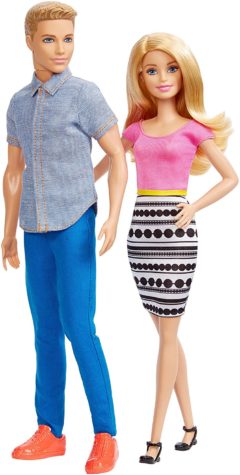
Actions like these influence more people to want to be more “beautiful” by looking perfect. Even though it seems like only women get body shamed, men do too. Women do get shamed more often because they are mainly judged based on their looks, and men are more judged on their smarts and looks.
15 year old Ellie Kauffman spoke about how Barbie has put an image of beautiful in young girls head, even though they were probably not aware of it at the time” “The fact that the model Barbie is skinny, has big boobs, is usually white, has a tiny waist; all these things at the time I wasn’t aware but looking back it could have definitely planted something in my brain and I know it did for other people.” Ellie is saying that although the little kids are probably not aware of it at the time, Barbie’s body image greatly affects the standards of beauty.
When kids play with Barbies, they often treat them as their idols.=
This should not be the reality because more than half the society’s beauty is fake. People use photoshop and plastic surgery to create lies about their appearance, and the only thing they are accomplishing is making others feel bad.
Because of this standard, people’s self-esteem goes spiralling down.When teenagers who are imperfect hear about and see people with perfect features, they often (not always) want to look like them. This thought causes many forms of self harm.
Some of these forms of self harm include anorexia, bulimia and possible suicidal actions and thoughts. It’s mostly teenagers who use these forms of self harm, because they are the age that cares most about their appearance.
An anonymous author writes about how the first time they purged was in 10th grade after eating a lot of chocolate ice cream. They write that after they purged, they felt much lighter and happier. Purging is when you eat a lot of food, and then make yourself sick to get rid of it, this disorder is called bulimia. This person had bulimia for 10 years, meaning they felt gross in their body for a decade.
A lot of people have anorexia, an eating disorder that causes you to starve yourself, and bulimia because of previous history in body shaming and low self-esteem. The reason why most people have low self-esteem is because of the people who photoshop themselves into looking perfect.
When people make themselves look perfect with photoshop and plastic surgery, it causes the people who are imperfect to get body shamed often. Body shaming is often the biggest part of beauty standards because people who think looks are everything make people who are imperfect feel worse about themselves.
The way these people make others feel bad are often just to make themselves feel better. They often use harsh language as well as physical bullying.
In the beginning of this article, a 29 year old who was told she looks like a reptile and her skin is repulsive was mentioned. Sadly, this has happened to so many people. A 27 year old woman named Theo experienced something similar. She has self harm scars on her shoulders, and because of it, her boss wants her to wear long sleeves so as not to let anyone see them.

People don’t only get body shamed for not having “perfect skin,” but they also often get body shamed for being called overweight, when the reality is they are completely healthy.
Studies have shown that people who excessively work out are more likely to have heart attacks, as well as risks such as loss of menstruation, osteoporosis or bone mineral loss. All of these causes are very medically harming because they cause your body to stop functioning properly.
Although excessive exercising may not seem like an eating disorder, it is. The only thing different is that your eating real food and then just burning it all off, instead of starving yourself or purging.
Another case of body shaming happens when people judge each other’s features. In the “ideal beauty standard” people have a tiny waist, big boobs and are tall. Because of this, people buy products that show off these features such as push up bras and girdles. A push up bra makes women’s breasts look bigger, and girdles make you appear skinnier.
14 year old Jaya Rao-Herel says, “It’s wrong for people to body shame others because it’s something that your not in control of, and even if you are it’s just something that’s not anyone’s place to give their opinions on. It’s one thing for someone to have an opinion on themselves, but when someone else shares their opinion it’s both invasive and uncalled for and can result in a lot of unneeded anxiety and stress around whatever they were commenting on.”
Jaya is making the point that nobody should get body shamed. If it’s their fault or not, it’s nobody’s place to share their negative thoughts.
Tanveer Syed writes about how when we look in the mirror and are unsatisfied with ourselves, we want to make our features look bigger. She writes about how we use push up bras to exentrate our features and make people more attracted to us.
The main reason why people get body shamed for all these causes is because the bully is just trying to feel better about themselves, and to do that, they make other people feel worse.
“Body-shaming statistics indicate that 94 percent of teenage girls have been body shamed.”
Have you heard of the new Netflix show Insatiable? Well, 15 year old Ellie Kauffman has a very strong opinion on it: “I think the show while it’s entertaining, it has a horrible message… I think it’s definitely about how your life will get better once your skinny and boys won’t like you when you’re fat and it just puts being skinny on a pedestal.”
When people are skinny or fit, many people admire them more, because of what society has laid on us. When many people see an overweight person or even someone who does not look like a twig walking on the street, they are often repulsed and disgusted.
Although it may seem like nothing has changed and that we as a society still treat people different based on looks, we have actually had many steps up from where we used to be.
There have been many companies who have advertised a new body image such as models with “natural beauty” as Gladys Porfirio calls it.
Companies like these are including all body shapes into the fashion world, which is what all fashion industries should be doing.
Freshman Georgia Badonsky says, “I think anyone can be a model, especially people with disorders or where their body isn’t perfect, it teaches people that your body doesn’t have to be perfect”
When little children see photoshopped models, they get this idea of what it means to be beautiful. When they see these models with imperfections, they are being taught that everyone is beautiful.
Winnie Harlow (right) is a famous, and gorgeous, model with a skin condition called vitiligo. Vitiligo causes you to have different pigmentations in your skin.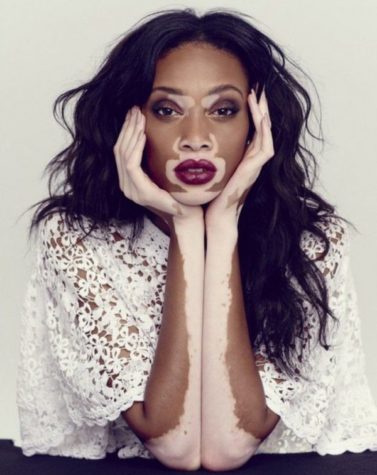
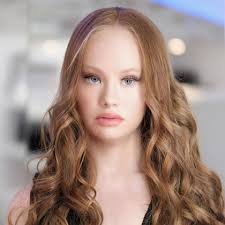 Madeline Stuart (left) is another famous and gorgeous model with down syndrome. She feels very comfortable in her body, and wants to show the world what beautiful means.
Madeline Stuart (left) is another famous and gorgeous model with down syndrome. She feels very comfortable in her body, and wants to show the world what beautiful means.
When companies hire models like this, it brings out the true beauty in people and influences more people to show off their imperfections.
We need more people like this in the world to educate others about how beauty affects our everyday lives.
Our society has created this standard of beauty that has caused hundreds of thousands if not millions of people to have a low self-esteem and eating disorders.
The main way beauty is portrayed is through social media, which is the worst form, because it has the greatest effect.
The problem isn’t your body. It’s what you think of it. And what you think of yourself.


